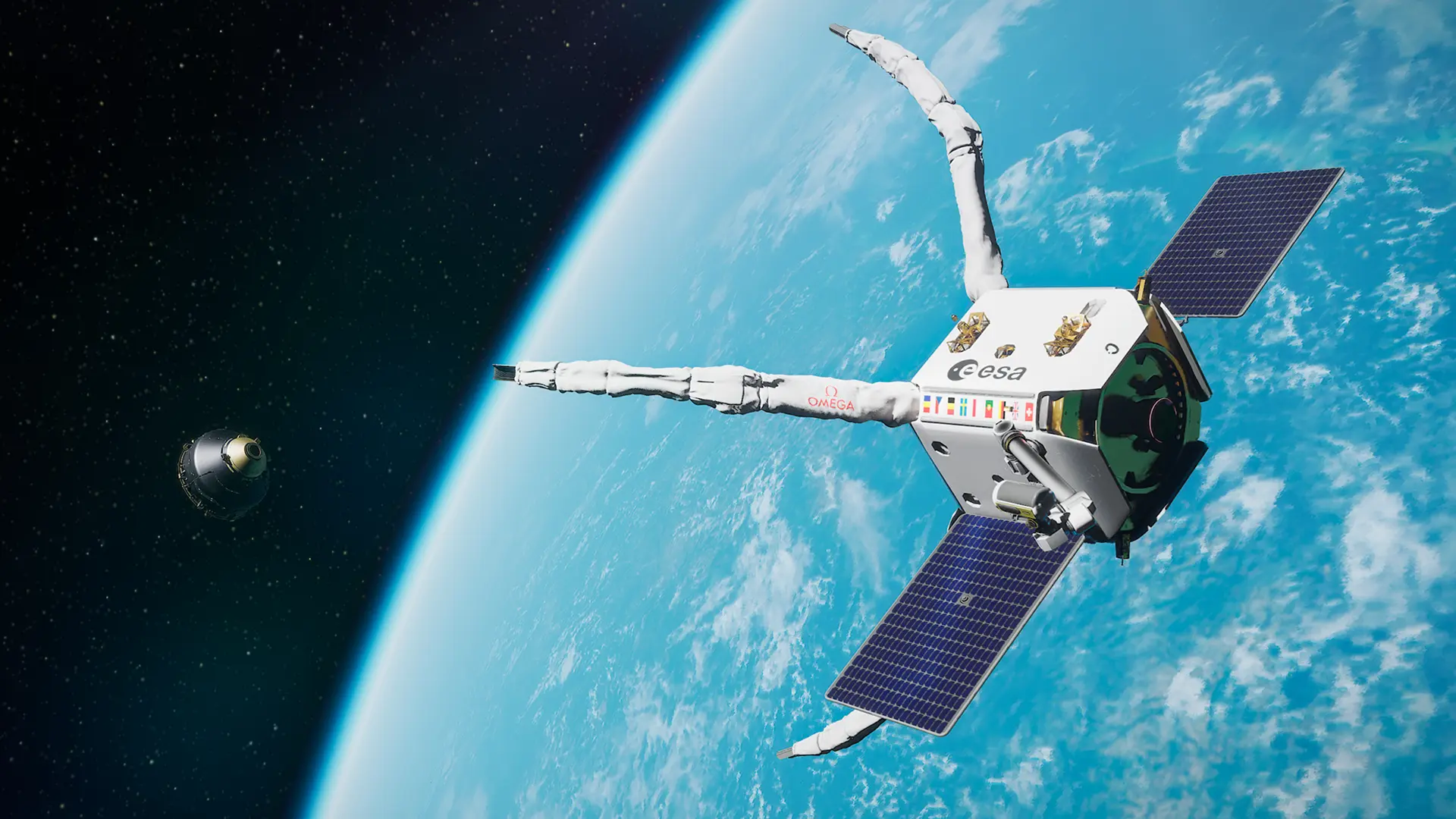
ClearSpace-1" mission enters next phase
Published on Sat, 25.02.2023 – 14:12 CET in R&D, covering ClearSpaceIn 2020, ClearSpace received a contract from the European Space Agency (ESA) to build a deorbit satellite to capture a large piece of debris in orbit and return it safely to Earth's atmosphere. Now, the Swiss company and its industrial partners have successfully passed ESA's first major program review.
ESA's commitment to debris removal has been demonstrated time and again in the recent past. For example, the "Zero Debris Approach" was launched in mid-January 2023. The goal is to completely eliminate space debris by 2030. In the fall of 2022, ESA reaffirmed its support for active debris removal. At the ESA Ministerial Council Conference, it was decided to fully fund the next phase of the ClearSpace-1 program. Additional capital is available to the company, which was founded in 2018, from a successful financing round in which the Swiss company raised a total of €26.7 million in January 2023.
ClearSpace-1 Mission: Four-armed robotic satellite to capture space debris
To stop the exponential growth of space debris, ESA says it must immediately begin removing existing debris. Of the more than 10,000 tons of space debris, about 36,500 are larger than 10 centimeters. These are, for example, decommissioned, inoperable satellites or old rocket upper stages. The larger the pieces, the easier they are to capture - although the process itself is no easy feat. ClearSpace relies on a four-arm system attached to a robotic satellite. This innovative technology passed proof-of-concept testing at ESA's ESTEC technology center in the Netherlands in October 2022.
Along with an experienced European industrial team and the close collaboration with ESA, we were able to reach this important milestone in an effective and technologically sound manner.
Muriel Richard-Noca, Chief Technology Officer & Co-Founder ClearSpace

© ClearSpace
ClearSpace is now qualified to initiate the next phase of the mission. Together with the industrial partners, the detailed design of the satellite will now be continued. In addition, spacecraft equipment must be procured. Last but not least, production of the technical model of the servicer satellite will also continue. Following successful qualification, OHB Sweden will now also be commencing work on the propulsion subsystem for the ClearSpace-1 mission.
As Benoit Mathieu, managing director of OHB Sweden, points out, OHB Sweden also sees the growing need for active debris removal as a satellite operator. The time to keep space accessible and operational is now, he said. Luc Piguet, CEO and co-founder of ClearSpace, added: "This is a major milestone for ClearSpace, setting us on course to become one of the world leading In-Orbit Servicing companies and is also a major step toward the resolution of the space debris issue. Debris represents a growing threat to the satellite services we all depend on, including research on climate change, weather prediction, communication, and a host of other applications. The cost of inaction is only increasing." ClearSpace-1 is scheduled for launch in 2026.